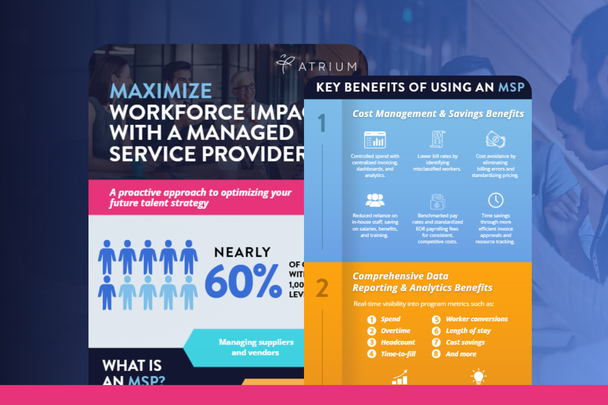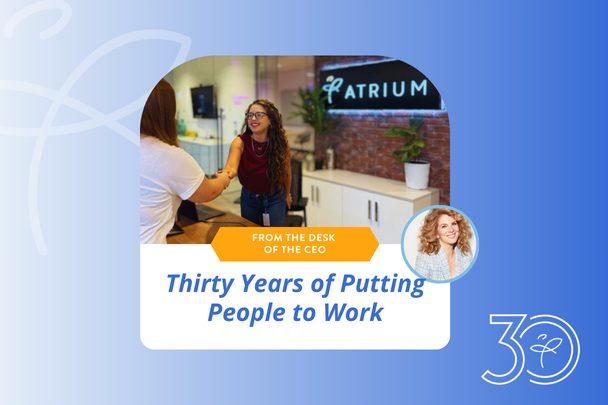EARLY TALENT SERIES: PART TWO
Early Talent Programs offer clear benefits – from lowering hiring costs to improving retention and strengthening your employer brand. Many companies recognize their value, but turning the desire to create a program into a successful internship initiative takes intentional planning and a strategic approach.
Building on the foundational ideas listed in our first post in this Early Talent Series, today we will focus on the practical side: how to thoughtfully plan and structure a program that delivers results. Whether you’re building a program from the ground up or enhancing an existing one, these four essential steps will guide your planning process and help create a solid foundation for success.
Step 1: Defining Goals and Objectives
When setting up your Early Talent Program, it’s important to decide what metrics matter to you and how you’ll know if you’re hitting the mark. Take some time each year to look back at what’s working and what could use some adjustments, then set new goals to keep things fresh and effective.
Planning Technology and Application Design
Choosing the right talent technology with the most fitting applicant tracking system (ATS) is an important first step. You want an ATS that’s the right fit for your organization. The goal here is to attract top-notch candidates and gain solid insights into your hiring process.
Understanding Your Strategies
Next, take a good look at your organizational strategies and see how Early Talent can play a role in your broader goals. This means figuring out the differences between types of talent and setting clear hiring targets.
Full-Time Conversion Goals
Don’t forget about your full-time conversion goals. Make sure you have a plan in place to support smooth transitions from intern and co-op roles to full-time positions.
Step 2: Structuring Your Program for Success
As you gear up for the recruitment cycle, it’s important to find that sweet spot between meeting business needs and providing a great candidate experience. Keep the following tips in mind to build a well-structured, impactful program:
Enhance Candidate Experience:
- Offer competitive compensation, benefits, and relocation support.
- Provide comprehensive job descriptions that highlight meaningful, goal-oriented projects. Students who are assigned intentional work are more likely to return to your company in the future.
- Leverage CRMs to engage talent and keep them informed beyond just applying to a role.
- Plan to implement additional program requirements that add value and structure.
Securing Early Talent:
- Establish clear eligibility requirements to maintain consistency across the program.
- Set up a clear plan for headcount allocation, especially if you have conversion goals in mind.
By addressing these points, you can create a more enjoyable experience for candidates while also making the process more manageable for your internal teams.
Step 3: Establishing a Timeline and Schedule
Setting clear timelines and deadlines improves the hiring experience for both managers and candidates. Sharing the schedule early helps everyone understand when to expect updates, when interviews will happen, and when offers will be made.
For managers, especially those hiring for the first time, having a detailed timeline can be helpful in navigating the process. To keep things organized, it’s a good idea to figure out how many recruitment cycles you want to run each year.
Here are some common time frames:
- Co-ops: 2-4 cycles per year, typically spanning Fall, Winter, Spring, and Summer, with each assignment lasting around 4-6 months.
- Summer internships: 10–12-week assignments from May to August.
Additionally, you should outline significant milestones within the recruitment lifecycle, such as:
- Recruitment kickoff
- Job posting deadlines
- Application deadlines
- Interview dates
- Offer extensions
Sticking to these important dates keeps things clear and structured, so everyone – managers and candidates alike – stays on the same page throughout the process.
Step 4: Allocating Resources and Budget
Effectively managing compensation is essential to attracting and retaining great Early Talent. A fair and straightforward compensation program improves the overall experience for everyone involved.
Here’s a quick guide to help you set up solid pay rates, budget for extra costs, and ensure your compensation remains competitive:
Early Talent Compensation Management
- Establish standardized program pay rates based on degree type (e.g., Bachelor’s, Master’s) and how far along participants are in their studies.
- Create and distribute a comprehensive compensation guide to all managers involved in hiring.
- Include details on how the internships are funded and provide a full breakdown of the costs. Don’t forget to account for extra expenses beyond salary, such as:
- Training resources and materials
- Equipment or software needs
- Relocation assistance, if applicable
- Mentor time allocation
- Administrative support
- Review your pay structure annually to make sure you’re keeping up with the market.
- Be transparent about compensation with candidates throughout the recruiting process.
Looking Ahead: Recruiting, Selecting, and Onboarding Interns the Right Way
Laying the groundwork is only the beginning. Next, we’ll explore how to recruit, select, and onboard interns effectively, ensuring a smooth, engaging experience for everyone. For a comprehensive resource, be sure to check out our complete guide to building a successful Early Talent Program.
Need help getting started? With over thirty years of experience managing Extended Workforce Programs, Atrium is here to support every phase of your Early Talent strategy.











